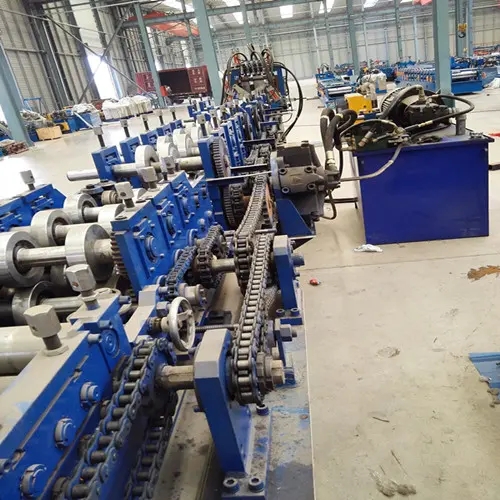
Understanding Simple Slitting Line Prices Factors and Considerations
In the manufacturing and metalworking industry, the demand for precision and efficiency is paramount. One of the essential tools that facilitate these objectives is the simple slitting line. This machinery is designed for processing coil materials, typically metal, into narrower strips or sheets by cutting them into desired widths. The pricing of a simple slitting line can vary widely based on several factors, which we will explore in this article.
What is a Simple Slitting Line?
A simple slitting line operates by uncoiling a large roll of material, feeding it through a series of knives that cut it into specific widths, and then recoiling the smaller strips into new rolls. This process is crucial for industries that require precise material dimensions, such as automotive, construction, and appliance manufacturing. The efficiency and effectiveness of simple slitting lines make them a crucial investment for companies looking to streamline their production processes.
Key Factors Influencing the Price
1. Machine Specifications The technical specifications of a slitting line play a significant role in its pricing. Factors such as the width and thickness of materials it can handle, the speed of operation, and the number of blades directly impact the cost. Higher capacity and more advanced technology typically result in a steeper price tag.
2. Manufacturing Quality The quality of construction and the reliability of components influence the longevity and performance of the slitting line. Machines built with high-quality materials and components may have a higher initial price, but they often provide better durability, lower maintenance costs, and increased efficiency over time.

3. Customization Many manufacturers offer customizable options for slitting lines to meet specific operational needs. Customization can include features like automatic edge guidance, tension control, or integrated packaging solutions. While these enhancements can lead to increased productivity, they also add to the overall cost of the machine.
4. Brand and Manufacturer Reputation Established brands with a reputation for quality and reliability often charge a premium for their equipment. While it may be tempting to opt for cheaper alternatives, investing in a reputable brand can lead to better customer support, service, and machine longevity.
5. Market Demand and Economic Factors Like many industries, the pricing for slitting lines can be influenced by market demand and broader economic conditions. In times of high demand or supply chain disruptions, prices may rise. Conversely, when demand is low, manufacturers may offer discounts or better financing options.
6. Installation and Training The cost of a simple slitting line doesn't end with the purchase price. Installation and operator training can add significant expenses. Some manufacturers include these services as part of the package, while others charge separately, further impacting the total investment.
Conclusion
When considering the purchase of a simple slitting line, understanding the factors that influence its price is essential for making an informed decision. Businesses must evaluate their specific needs, budget constraints, and the long-term benefits that come from investing in quality machinery. While the initial investment can be substantial, the potential for increased efficiency, lower production costs, and improved material handling can provide significant returns over time. As with any industrial investment, careful planning and thorough research will ensure that companies choose the right slitting line to meet their operational demands.